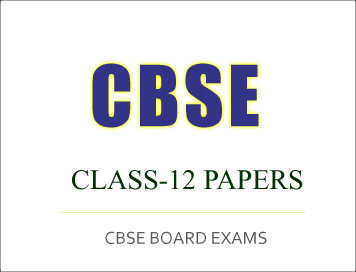CBSE PORTAL : CBSE Class-12 Exam 2017 : All India Scheme Question Paper, Printed Textiles | |
- CBSE Class-12 Exam 2017 : All India Scheme Question Paper, Printed Textiles
- CBSE Class-12 Exam 2017 : All India Scheme Question Paper, Traditional Indian Textiles
- CBSE Class-12 Exam 2017 : All India Scheme Question Paper, Garment Construction
- CBSE Class-12 Exam 2017 : All India Scheme Question Paper, Basic Pattern Development
- CBSE Class-12 Exam 2017 : All India Scheme Question Paper, Fabric Study
- CBSE 2017-18 Syllabus Class-12 :Fashion Studies
| CBSE Class-12 Exam 2017 : All India Scheme Question Paper, Printed Textiles Posted: 04 Aug 2017 11:52 PM PDT |
| CBSE Class-12 Exam 2017 : All India Scheme Question Paper, Traditional Indian Textiles Posted: 04 Aug 2017 11:44 PM PDT |
| CBSE Class-12 Exam 2017 : All India Scheme Question Paper, Garment Construction Posted: 04 Aug 2017 01:23 AM PDT |
| CBSE Class-12 Exam 2017 : All India Scheme Question Paper, Basic Pattern Development Posted: 04 Aug 2017 01:12 AM PDT |
| CBSE Class-12 Exam 2017 : All India Scheme Question Paper, Fabric Study Posted: 04 Aug 2017 01:00 AM PDT |
| CBSE 2017-18 Syllabus Class-12 :Fashion Studies Posted: 03 Aug 2017 11:41 PM PDT
CBSE Class-12 Syllabus 2017-18
Subject: Fashion StudiesPreamble: Fashion is dynamic and ever changing. It is one of the most powerful forces in our lives. It influences every facet of our lifestyle at a particular period in time e.g. the clothes we wear, the music we listen, the food we eat, where we go for holiday or the car we drive in etc. Fashion is a big business and key driver for several industries e.g. apparel, accessories, textiles, automobiles etc. The purpose of the course ‘Fashion Studies’ is to tell the students about the fundamentals of fashion design. Fashion Design as a profession includes the entire process of designing and producing fashion apparels from the fibre and yarn stage to the finished product. The course will give an overview of fashion design and elaborate on different aspects like elements of design, history of fashion, fabrics, and understanding of the body, pattern development and garment construction. CLICK HERE TO DOWNLOADCourtesy: CBSE |
| You are subscribed to email updates from CBSE PORTAL : CBSE, ICSE, NIOS, JEE-MAIN, AIPMT Students Community. To stop receiving these emails, you may unsubscribe now. | Email delivery powered by Google |
| Google Inc., 1600 Amphitheatre Parkway, Mountain View, CA 94043, United States | |

